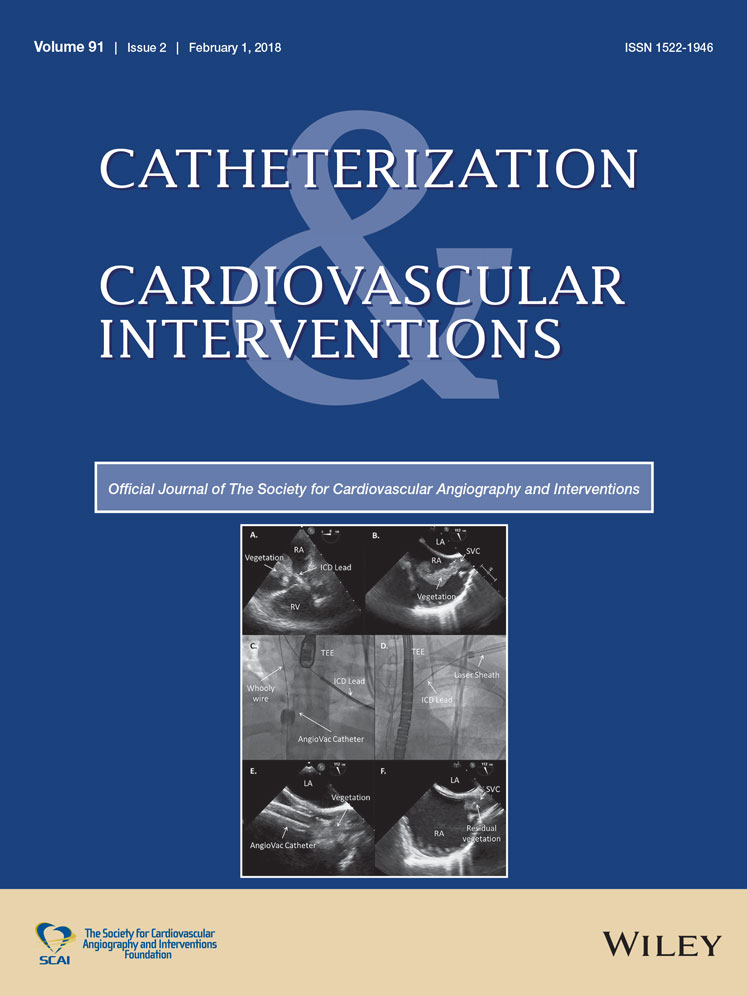Peripheral Vascular Disease
Perforations and how to manage: The coronary interventionalist and peripheral interventionalist working together for a solution
First published: 06 February 2018
Key Points
- Perforations can occur in both peripheral and coronary interventional procedures potentially resulting in severe morbidity
- A readily available therapeutic option to treat perforations should be present in every cath lab that does coronary and peripheral procedures
- The use of a coagulated thrombus injection can be an effective treatment option, but if a major vessel is affected that must remain patent, one viable option is to administer the patients’ own clotted blood to recanalize the vessel without permanent sequelae
CONFLICT OF INTEREST
Nothing to report.




